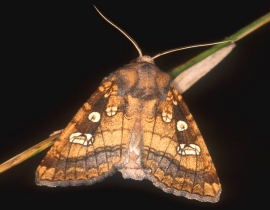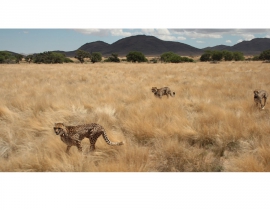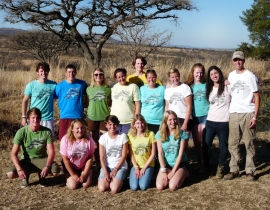Posted January 24, 2014 in All
Since 2008, Action for the Wild has been working on a conservation project with the Fisher’s Estuarine Moth. Colchester Zoo is involved with the breeding programme aspect of the project; working to provide a readily available supply of eggs for release into newly created habitat around Essex. In an offshow area of the zoo, our keepers look after the moth eggs, ensure the caterpillars have sufficient root stock in their food plant on hatching and finally, once emerged in autumn, pair up unrelated adult moths for mating. Resulting eggs are then used for the following year’s captive breeding programme and any additional eggs are released into newly created habitat sites.
For the 2013 programme, ten batches of eggs were used. In early April, the eggs were placed in plastic tubs so our keepers could monitor them for hatching. Hatching was late in 2013, with the first batch hatching on the 1st May; the others followed over the next few days. In total four out of the ten batches hatched, with 24 larva placed throughout 10 of our breeding cages and between 2-4 larva per plant. The surplus eggs and larva were then collected and distributed to the newly created Hog’s fennel sites.
Of the 24 larva, only six moths emerged in 2013; three females and three males. The adult moths do not have a long lifespan and sadly only one mating pair was formed, as the other moths did not emerge at suitable times to form a pair. The matched pair were, however, seen mating, but sadly after collection of the grass stems from the breeding cage, no obvious eggs were found. In 2014, we will look to alter the programme, with higher numbers of larva distributed onto the plants to hopefully increase emergent moth numbers.
As well as the breeding programme Colchester Zoo staff and Action for the Wild are kept up to date with sites that have naturally occurring populations of the moth, as well as the additional sites that have been newly established via natural dispersal of the moth. Signs of the moth at the newly created sites are better than in previous years, with 20 out of the 23 sites surveyed having signs. In fact, adult moths were found at almost every site surveyed. Numbers of moths at the naturally occurring sites are also recovering with higher than usual numbers recorded. This monitoring work will continue over the long term in the hope that the surveys continue to yield high numbers of moths for the future.
Picture of a Fishers Estuarine Moth © Micky Andrews.



